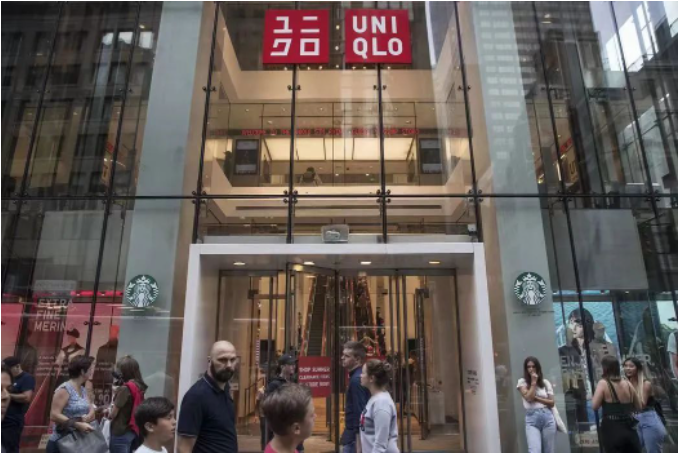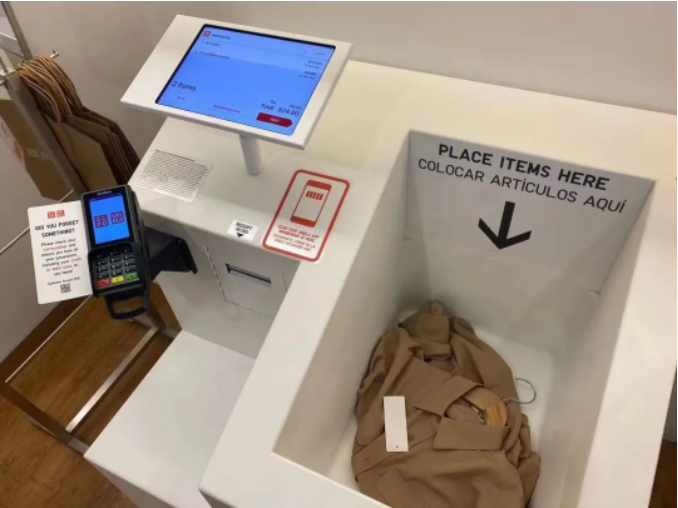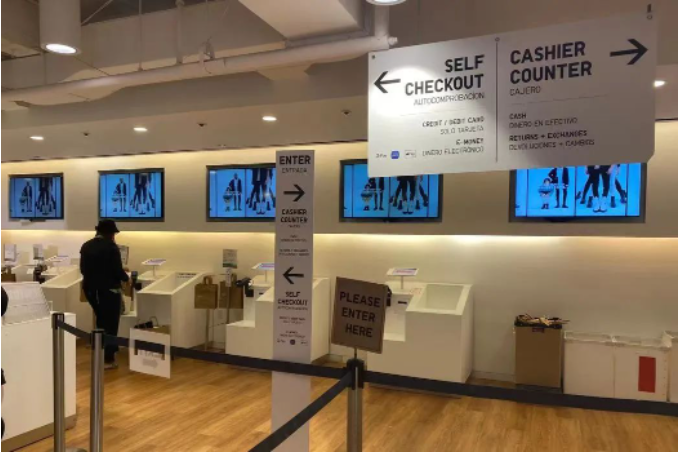At Uniqlo’s Fifth Avenue store in New York, shoppers simply place items in boxes at vending stations to check out. Unlike the self-checkout process at many stores, customers at the casual apparel retailer don’t need to scan individual items or look up prices on screens — they simply drop items into their bins and pay.
This next-generation autonomous checkout device is powered by an RFID reader inside the cash register. The reader can automatically read hidden RFID chips embedded in price tags, according to reports, which is the strategy of Takahiro Tambara, chief information officer of Fast Retailing Co., Asia’s top clothing retailer. Fast Retailing Co. is the Japan-based parent company of Uniqlo. A few years ago, Tambala set out to change the way customers shop in physical stores, and even as more and more business activities have shifted to online, physical stores are still the center of gravity of the company’s business model.
Self-checkout machines are at the heart of Uniqlo’s use of RFID to improve its supply chain, Tambara said. As early as 2017, all Fast Retailing brands, including Theory and Helmut Lang, have begun embedding RFID chips in price tags, allowing retailers to track individual items from the factory to the warehouse to the interior of the store. The company also said the data has been crucial for Uniqlo to improve inventory accuracy, adjust production according to demand and improve supply chain visibility.
Mr. Tambara also said: “We introduced RFID not because we wanted to automate the checkout process, but because we wanted to develop a platform to use it throughout the supply chain.”
McKinsey & Co. (McKinsey & Co.) Praveen Adhi, a senior partner in charge of the Americas retail business, said that the cost of RFID tags has dropped from 60 cents a few decades ago to 4 cents, and the hardware of readers has improved in range and accuracy. Both technologies have improved, so newer, cheaper RFID chips, reader hardware and software allow retailers such as Uniqlo to implement the technology at lower cost and with greater precision.
Uniqlo also stated that RFID technology has greatly reduced the out-of-stock phenomenon on the sales floor, and at the same time helps to “reduce the chance of customers being unable to shop due to out-of-stock, thereby improving customer satisfaction.” But the company declined to provide more specific information on the technology’s business impact.
Fast Retailing has been testing the technology since 2013 and began rolling out RFID-enabled self-checkout machines in select stores in 2019. Mr. Tambara declined to disclose how much Fast Retailing was spending on the technology, but said Fast Retailing had doubled its investment in information technology since 2016. In 2016, Fast Retailing launched a strategy to become a digital clothing retailer, so it developed its own e-commerce platform.
While the most common use case for RFID is to improve inventory management, its use at self-checkout machines is also growing in popularity as more apparel retailers explore ways to apply the technology after merchandise has been tagged. For most apparel brands, implementing RFID “will be on the agenda in 2023 or 2024,” Adhi said.
He added that many retailers still rely on barcodes, which require manual scanning and carry limited data. But the unique advantage of an RFID-based checkout system like Uniqlo’s is that it’s faster and more accurate than barcode-based self-checkout machines. And Fast Retailing is one of the few apparel retailers to implement RFID self-checkout on a large scale so far, which also highlights the problems that retailers need to overcome before launching RFID on a large scale-the long deployment effect cycle. Uniqlo revealed that all 47 stores in the United States and 16 stores in Canada and 14 of the 25 malls can use Uniqlo’s cash registers.
Fast Retailing said that since the introduction of the vending machines, customer wait times at checkouts have decreased by 50%. The company has already integrated RFID readers and antennas into its point-of-sale system, and says items are no longer tracked after purchase.
However, many shoppers are still hesitant to use self-checkout machines because they are annoyed by difficult-to-scan items and other problems with self-checkout machines. Thirty-six percent of shoppers surveyed by customer experience technology company Raydiant in 2021 said they had significantly increased their use of self-checkouts, while 67 percent said they had experienced some kind of glitch at a machine. So retailers like Uniqlo are hoping to ease consumers’ concerns by offering better technology.
Recently, ChatGPT has attracted the attention of the world, but there is still a lot of work that can be done with simpler technologies such as RFID. Sucharita Kodali, vice president and retail industry analyst at Forrester Research Inc., said RFID is the most practical item tracking technology available today, if not the most advanced technology. Computer vision, as artificial intelligence that can analyze images, is currently too expensive for widespread use in self-checkout and inventory management.
Rivals of Uniqlo, such as Inditex, the parent company of the Spanish fast-fashion brand Zara chain, have been putting RFID tags on their goods since 2014 and have been testing the technology for self-checkouts. French sporting goods retailer Decathlon said it began installing RFID on more self-checkout machines in 2014.
Post time: Jun-16-2023





